Agricultural Economics Assignment: Market Analysis and Price Controls
VerifiedAdded on 2022/12/14
|6
|987
|314
Homework Assignment
AI Summary
This agricultural economics assignment delves into various economic concepts relevant to the agricultural sector. Question 1 explores price caps and farm price ceilings, explaining their impact on market equilibrium and the creation of scarcity or surplus. Question 2 examines the structure of the construction sector, particularly the electricity market, and highlights the importance of competition even in areas with natural monopoly characteristics. It also emphasizes the need for financial viability in projects. Question 3 discusses cost benefit analysis (CBA) reports, stressing the need for transparent data, methodologies, and assumptions to ensure the reliability of findings. The assignment also touches upon how the price of alternative goods affects supply and how changes in price influence demand. The paper provides a comprehensive analysis of the market structures and price controls in agricultural economics, supported by references to relevant literature.
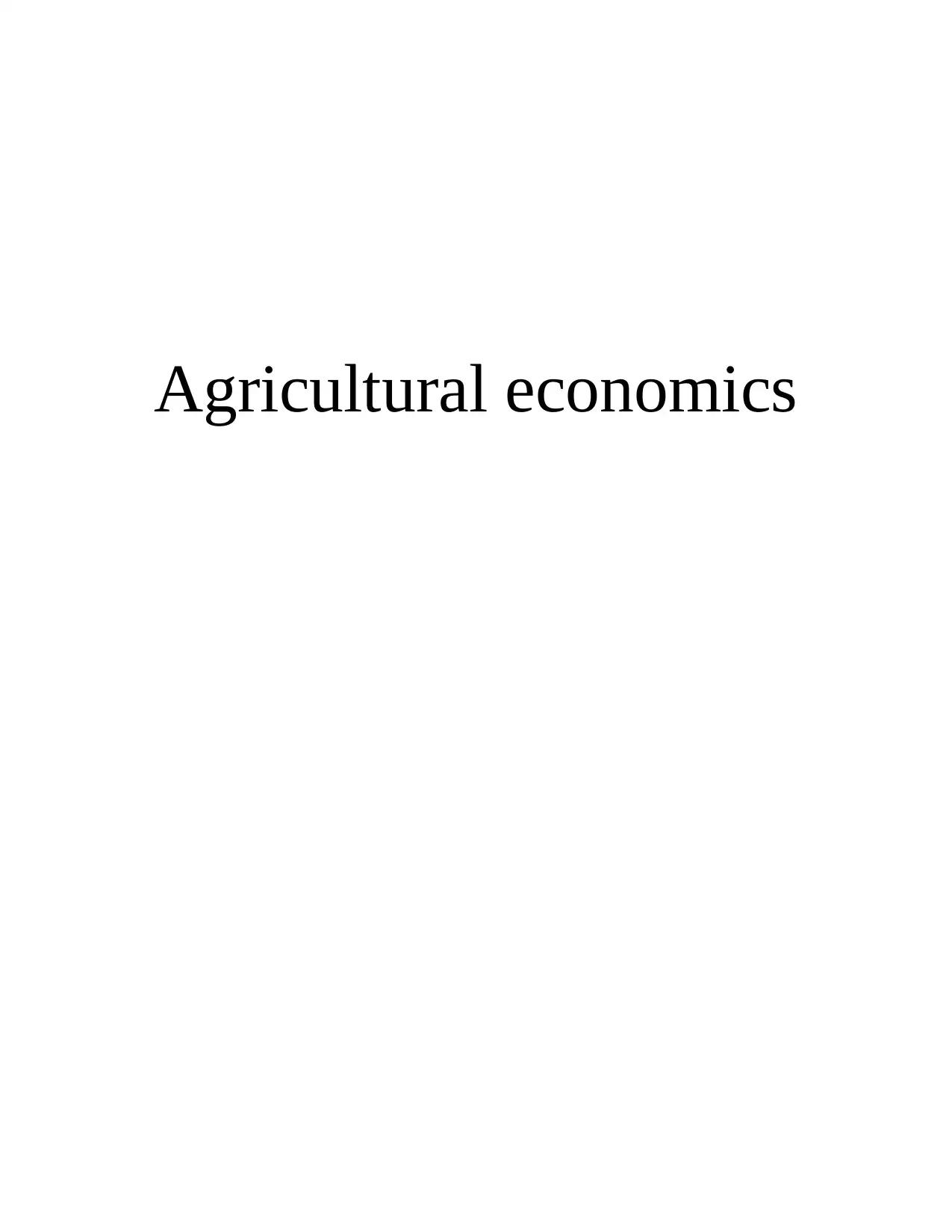
Agricultural economics
Paraphrase This Document
Need a fresh take? Get an instant paraphrase of this document with our AI Paraphraser
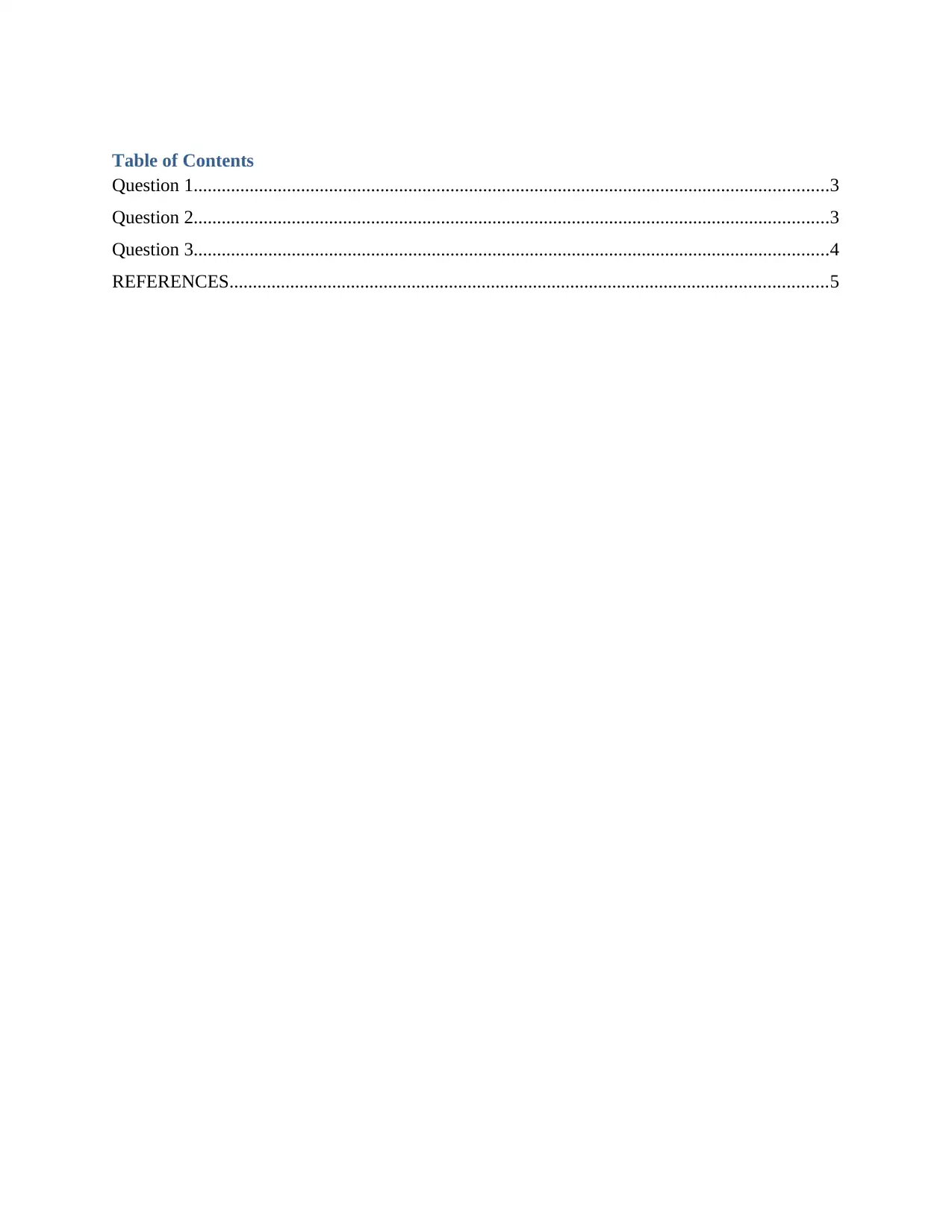
Table of Contents
Question 1........................................................................................................................................3
Question 2........................................................................................................................................3
Question 3........................................................................................................................................4
REFERENCES................................................................................................................................5
Question 1........................................................................................................................................3
Question 2........................................................................................................................................3
Question 3........................................................................................................................................4
REFERENCES................................................................................................................................5
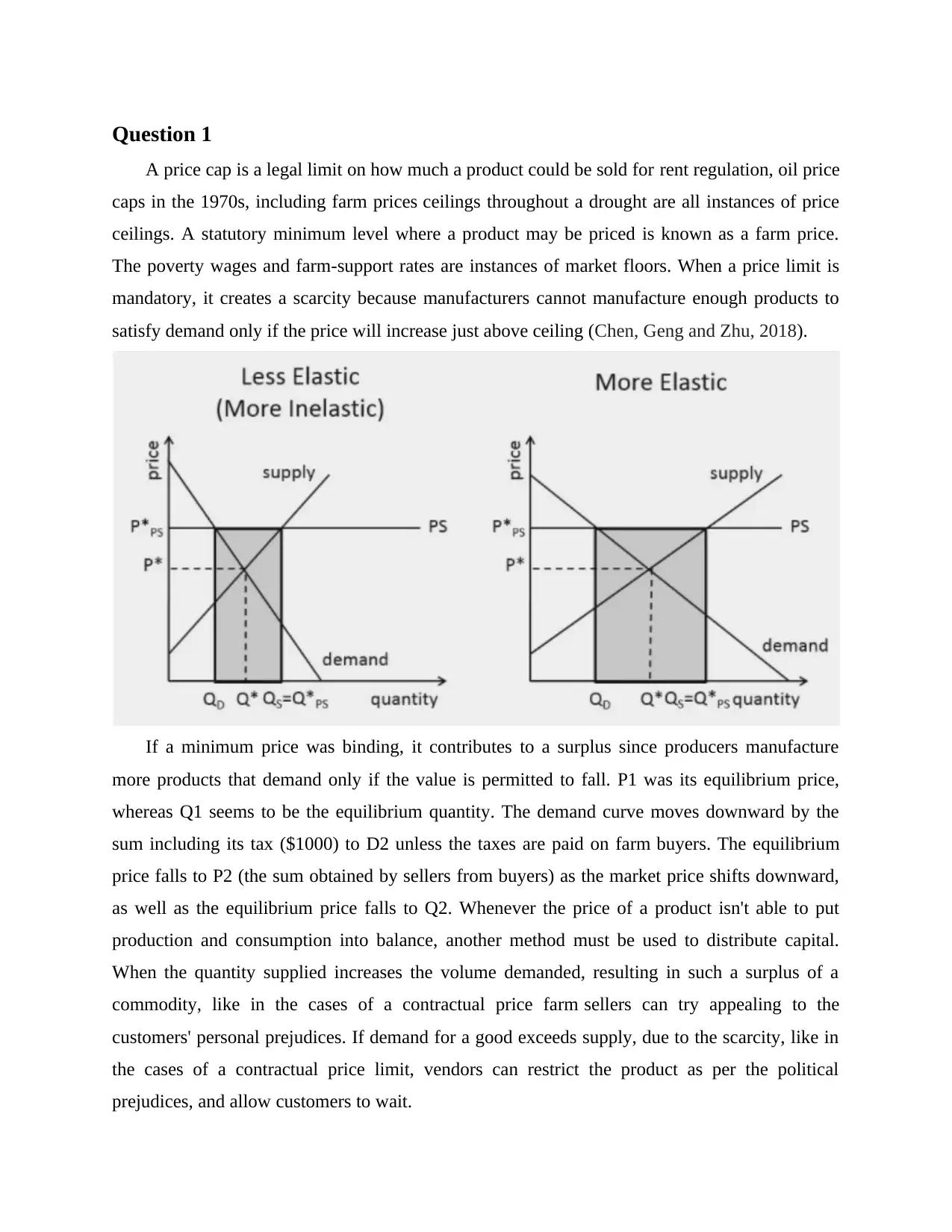
Question 1
A price cap is a legal limit on how much a product could be sold for rent regulation, oil price
caps in the 1970s, including farm prices ceilings throughout a drought are all instances of price
ceilings. A statutory minimum level where a product may be priced is known as a farm price.
The poverty wages and farm-support rates are instances of market floors. When a price limit is
mandatory, it creates a scarcity because manufacturers cannot manufacture enough products to
satisfy demand only if the price will increase just above ceiling (Chen, Geng and Zhu, 2018).
If a minimum price was binding, it contributes to a surplus since producers manufacture
more products that demand only if the value is permitted to fall. P1 was its equilibrium price,
whereas Q1 seems to be the equilibrium quantity. The demand curve moves downward by the
sum including its tax ($1000) to D2 unless the taxes are paid on farm buyers. The equilibrium
price falls to P2 (the sum obtained by sellers from buyers) as the market price shifts downward,
as well as the equilibrium price falls to Q2. Whenever the price of a product isn't able to put
production and consumption into balance, another method must be used to distribute capital.
When the quantity supplied increases the volume demanded, resulting in such a surplus of a
commodity, like in the cases of a contractual price farm sellers can try appealing to the
customers' personal prejudices. If demand for a good exceeds supply, due to the scarcity, like in
the cases of a contractual price limit, vendors can restrict the product as per the political
prejudices, and allow customers to wait.
A price cap is a legal limit on how much a product could be sold for rent regulation, oil price
caps in the 1970s, including farm prices ceilings throughout a drought are all instances of price
ceilings. A statutory minimum level where a product may be priced is known as a farm price.
The poverty wages and farm-support rates are instances of market floors. When a price limit is
mandatory, it creates a scarcity because manufacturers cannot manufacture enough products to
satisfy demand only if the price will increase just above ceiling (Chen, Geng and Zhu, 2018).
If a minimum price was binding, it contributes to a surplus since producers manufacture
more products that demand only if the value is permitted to fall. P1 was its equilibrium price,
whereas Q1 seems to be the equilibrium quantity. The demand curve moves downward by the
sum including its tax ($1000) to D2 unless the taxes are paid on farm buyers. The equilibrium
price falls to P2 (the sum obtained by sellers from buyers) as the market price shifts downward,
as well as the equilibrium price falls to Q2. Whenever the price of a product isn't able to put
production and consumption into balance, another method must be used to distribute capital.
When the quantity supplied increases the volume demanded, resulting in such a surplus of a
commodity, like in the cases of a contractual price farm sellers can try appealing to the
customers' personal prejudices. If demand for a good exceeds supply, due to the scarcity, like in
the cases of a contractual price limit, vendors can restrict the product as per the political
prejudices, and allow customers to wait.
⊘ This is a preview!⊘
Do you want full access?
Subscribe today to unlock all pages.

Trusted by 1+ million students worldwide
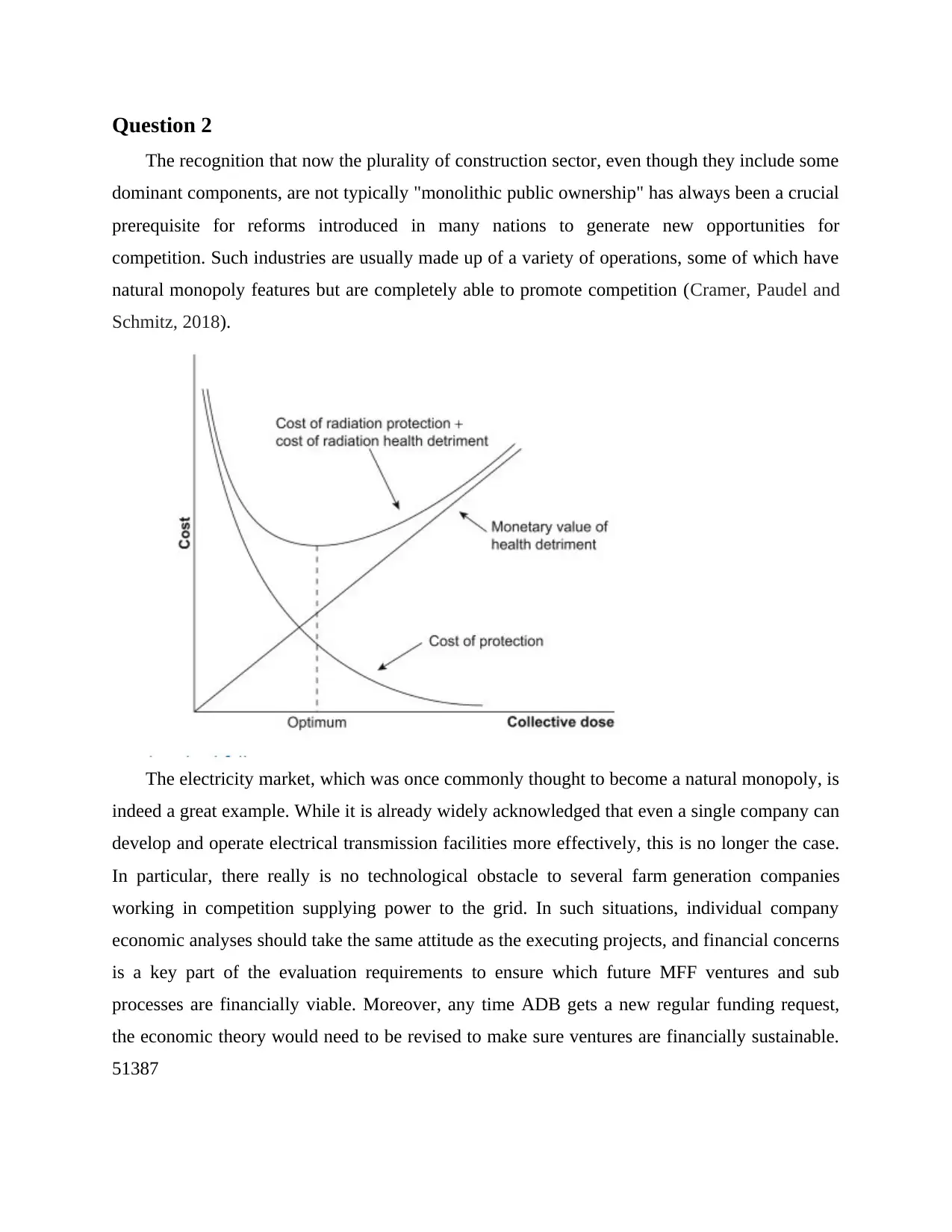
Question 2
The recognition that now the plurality of construction sector, even though they include some
dominant components, are not typically "monolithic public ownership" has always been a crucial
prerequisite for reforms introduced in many nations to generate new opportunities for
competition. Such industries are usually made up of a variety of operations, some of which have
natural monopoly features but are completely able to promote competition (Cramer, Paudel and
Schmitz, 2018).
The electricity market, which was once commonly thought to become a natural monopoly, is
indeed a great example. While it is already widely acknowledged that even a single company can
develop and operate electrical transmission facilities more effectively, this is no longer the case.
In particular, there really is no technological obstacle to several farm generation companies
working in competition supplying power to the grid. In such situations, individual company
economic analyses should take the same attitude as the executing projects, and financial concerns
is a key part of the evaluation requirements to ensure which future MFF ventures and sub
processes are financially viable. Moreover, any time ADB gets a new regular funding request,
the economic theory would need to be revised to make sure ventures are financially sustainable.
51387
The recognition that now the plurality of construction sector, even though they include some
dominant components, are not typically "monolithic public ownership" has always been a crucial
prerequisite for reforms introduced in many nations to generate new opportunities for
competition. Such industries are usually made up of a variety of operations, some of which have
natural monopoly features but are completely able to promote competition (Cramer, Paudel and
Schmitz, 2018).
The electricity market, which was once commonly thought to become a natural monopoly, is
indeed a great example. While it is already widely acknowledged that even a single company can
develop and operate electrical transmission facilities more effectively, this is no longer the case.
In particular, there really is no technological obstacle to several farm generation companies
working in competition supplying power to the grid. In such situations, individual company
economic analyses should take the same attitude as the executing projects, and financial concerns
is a key part of the evaluation requirements to ensure which future MFF ventures and sub
processes are financially viable. Moreover, any time ADB gets a new regular funding request,
the economic theory would need to be revised to make sure ventures are financially sustainable.
51387
Paraphrase This Document
Need a fresh take? Get an instant paraphrase of this document with our AI Paraphraser
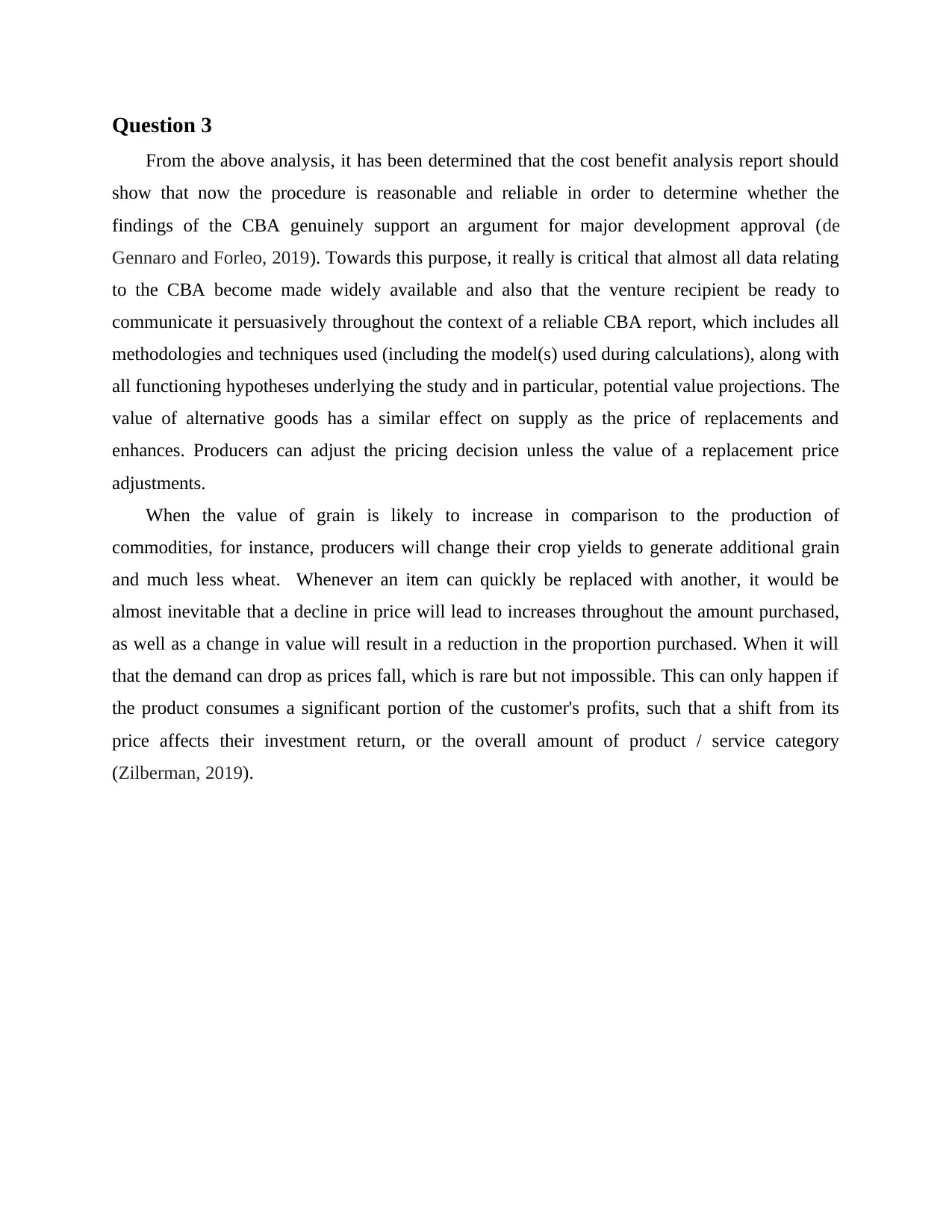
Question 3
From the above analysis, it has been determined that the cost benefit analysis report should
show that now the procedure is reasonable and reliable in order to determine whether the
findings of the CBA genuinely support an argument for major development approval (de
Gennaro and Forleo, 2019). Towards this purpose, it really is critical that almost all data relating
to the CBA become made widely available and also that the venture recipient be ready to
communicate it persuasively throughout the context of a reliable CBA report, which includes all
methodologies and techniques used (including the model(s) used during calculations), along with
all functioning hypotheses underlying the study and in particular, potential value projections. The
value of alternative goods has a similar effect on supply as the price of replacements and
enhances. Producers can adjust the pricing decision unless the value of a replacement price
adjustments.
When the value of grain is likely to increase in comparison to the production of
commodities, for instance, producers will change their crop yields to generate additional grain
and much less wheat. Whenever an item can quickly be replaced with another, it would be
almost inevitable that a decline in price will lead to increases throughout the amount purchased,
as well as a change in value will result in a reduction in the proportion purchased. When it will
that the demand can drop as prices fall, which is rare but not impossible. This can only happen if
the product consumes a significant portion of the customer's profits, such that a shift from its
price affects their investment return, or the overall amount of product / service category
(Zilberman, 2019).
From the above analysis, it has been determined that the cost benefit analysis report should
show that now the procedure is reasonable and reliable in order to determine whether the
findings of the CBA genuinely support an argument for major development approval (de
Gennaro and Forleo, 2019). Towards this purpose, it really is critical that almost all data relating
to the CBA become made widely available and also that the venture recipient be ready to
communicate it persuasively throughout the context of a reliable CBA report, which includes all
methodologies and techniques used (including the model(s) used during calculations), along with
all functioning hypotheses underlying the study and in particular, potential value projections. The
value of alternative goods has a similar effect on supply as the price of replacements and
enhances. Producers can adjust the pricing decision unless the value of a replacement price
adjustments.
When the value of grain is likely to increase in comparison to the production of
commodities, for instance, producers will change their crop yields to generate additional grain
and much less wheat. Whenever an item can quickly be replaced with another, it would be
almost inevitable that a decline in price will lead to increases throughout the amount purchased,
as well as a change in value will result in a reduction in the proportion purchased. When it will
that the demand can drop as prices fall, which is rare but not impossible. This can only happen if
the product consumes a significant portion of the customer's profits, such that a shift from its
price affects their investment return, or the overall amount of product / service category
(Zilberman, 2019).
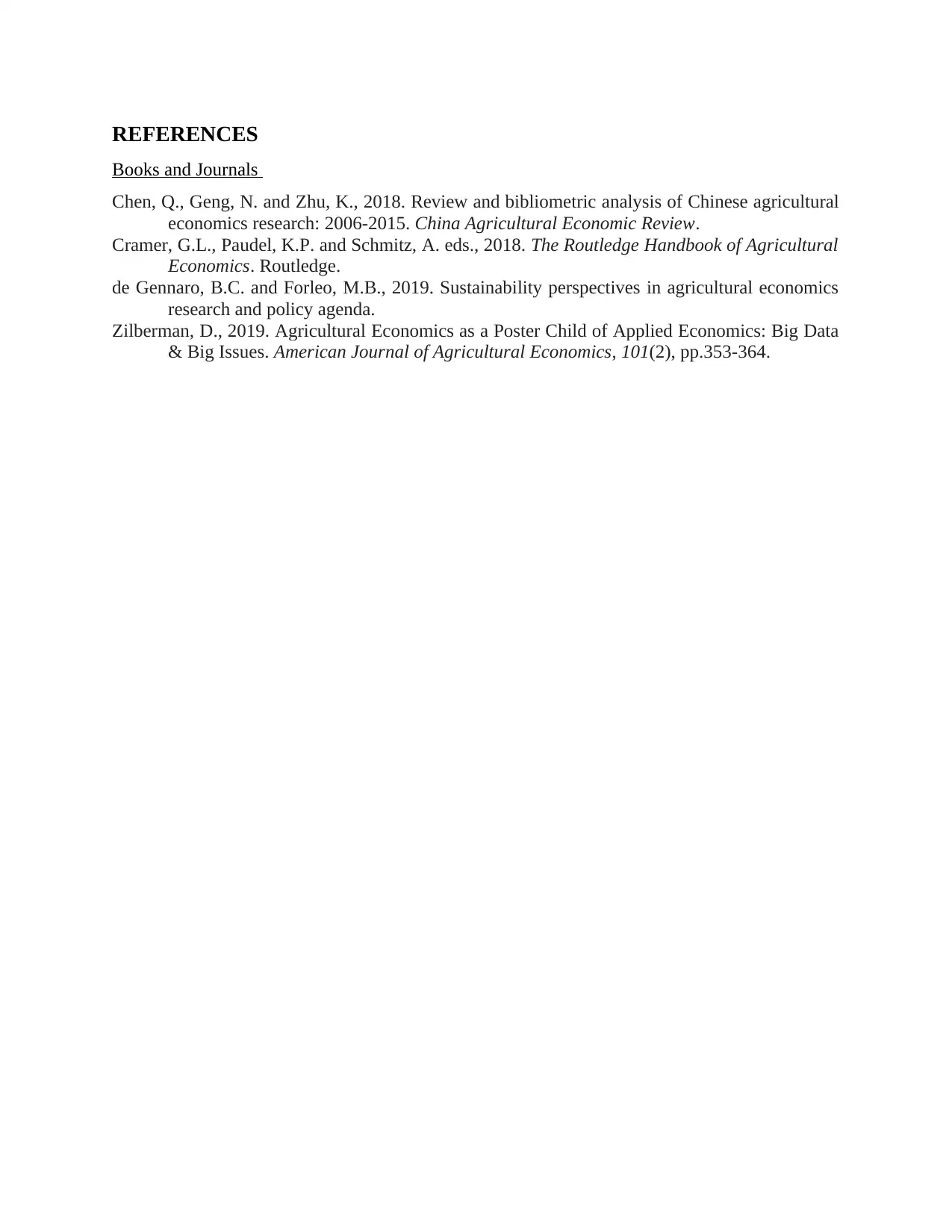
REFERENCES
Books and Journals
Chen, Q., Geng, N. and Zhu, K., 2018. Review and bibliometric analysis of Chinese agricultural
economics research: 2006-2015. China Agricultural Economic Review.
Cramer, G.L., Paudel, K.P. and Schmitz, A. eds., 2018. The Routledge Handbook of Agricultural
Economics. Routledge.
de Gennaro, B.C. and Forleo, M.B., 2019. Sustainability perspectives in agricultural economics
research and policy agenda.
Zilberman, D., 2019. Agricultural Economics as a Poster Child of Applied Economics: Big Data
& Big Issues. American Journal of Agricultural Economics, 101(2), pp.353-364.
Books and Journals
Chen, Q., Geng, N. and Zhu, K., 2018. Review and bibliometric analysis of Chinese agricultural
economics research: 2006-2015. China Agricultural Economic Review.
Cramer, G.L., Paudel, K.P. and Schmitz, A. eds., 2018. The Routledge Handbook of Agricultural
Economics. Routledge.
de Gennaro, B.C. and Forleo, M.B., 2019. Sustainability perspectives in agricultural economics
research and policy agenda.
Zilberman, D., 2019. Agricultural Economics as a Poster Child of Applied Economics: Big Data
& Big Issues. American Journal of Agricultural Economics, 101(2), pp.353-364.
⊘ This is a preview!⊘
Do you want full access?
Subscribe today to unlock all pages.

Trusted by 1+ million students worldwide
1 out of 6
Related Documents
Your All-in-One AI-Powered Toolkit for Academic Success.
+13062052269
info@desklib.com
Available 24*7 on WhatsApp / Email
![[object Object]](/_next/static/media/star-bottom.7253800d.svg)
Unlock your academic potential
Copyright © 2020–2025 A2Z Services. All Rights Reserved. Developed and managed by ZUCOL.




